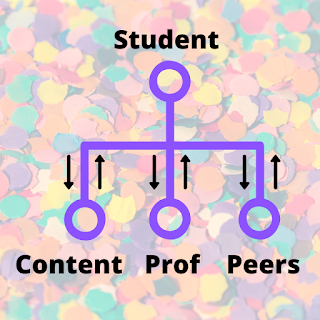“I just don’t know my students this semester.”
Are you feeling this? I've discovered colleagues are sharing this sentiment since the COVID pivot to remote and distance learning models.
For those who have taught online previously, we structure classes with social presence theory in mind — making sure students connect with us, their colleagues, and the content. But are we closing the loop, and making sure we get to know them?
Take this scenario: A great internship opportunity pops into your email and you immediately scroll through your mind for students who would be a good fit. Not having a great fit yourself, you spread the word to other profs teaching courses more related to the opportunity. Nope, none, nada. “I just don’t know my students this semester.”
As a professor who teaches in all modalities, I work to create experiences and connections for students. For online courses, I intentionally create opportunities for social presence. My three-prong approach aims to connect students to the content, me, and other students.
In all honesty, it’s a hub and spoke model. The key is viewing each arm with an input and output — two-way communication.
I think we might be worrying about the students connecting with us and forgetting about us connecting back with them. The switch to remote learning for many instructors stripped away their normal ways to exchanging with students — the before and after class conversations or watching for faces light up during particular topics — and making those mental notes of interests and preferences.
This especially comes into play when we are trying to match students with internships and opportunities. Yes, you can send the notice to all students, but sometimes that individual nudge that "you'd be great at this" pushes a student to apply.
We need to find ways to adapt.
- Online get-to-know-you interest surveys can help. Ask students what kinds of opportunities would they like to hear about. Then keep the answers in a safe place and reference it when an opportunity comes along.
- Ask students to email you their interests with a specified subject line. Then you can capture all of those messages into one folder, and it's searchable for key words when you have a hot lead.
- Even in an asynchronous course, I have set up small virtual group meeting times where students can pop in for a quick chat. I find this is where I learn a bit more about each student as an individual.
- Low stakes reflective writing assignments can illuminate a student's talents and career interests as well. As you notice a student's strengths, make a note in your gradebook about it.
How do you close the circle in a two-way communication loop? How are you making social presence theory work for your students and you?






